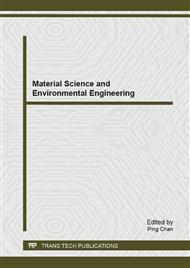[1]
R.Z. Valiev, R.K. Islamgaliev, I.V. Alexandrov. Bulk nanostructured materials from severe plastic deformation[J]. Progress in Materials Science, 2000, 45(2): 103-189.
DOI: 10.1016/s0079-6425(99)00007-9
Google Scholar
[2]
D.P. DeLo, S.L. Semiatin. Hot working of Ti-6Al-4V via equal channel angular extrusion[J]. Metall. Mater. Trans. 1999, 30A(9): 2473-2481.
DOI: 10.1007/s11661-999-0256-9
Google Scholar
[3]
R.Z. Valiev, A.K. Mukherjee. Nano structures and unique properties in intermetallic subjected to severe plastic deformation[J]. Scr. Mater., 2001, 44 : 1747-1750.
DOI: 10.1016/s1359-6462(01)00795-3
Google Scholar
[4]
Y. Saito, H. Utsunomiya, N. Tsuji, et al. Novel ultra-high straining process for bulk materials: development of the accumulative roll-bonding (ARB) process[J]. Acta Mater., 1999, 47(2): 579-583.
DOI: 10.1016/s1359-6454(98)00365-6
Google Scholar
[5]
M. Richert, Q. Liu, N. Hansen. Microstructural evolution over a large strain range in aluminium deformed by cyclic-extrusion–compression Original Research Article[J]. Materials Science and Engineering: A, 1999, 260(1-2): 275-283.
DOI: 10.1016/s0921-5093(98)00988-5
Google Scholar
[6]
J.Y. Huang, Y.T. Zhu, H. Jiang, T.C. Lowe. Microstructures and dislocation configurations in nanostructured Cu processed by repetitive corrugation and straightening[J]. Acta Materialia, 2001, 49(9): 1497-1505.
DOI: 10.1016/s1359-6454(01)00069-6
Google Scholar
[7]
K. Lu, J. Lu. Surface Nanocrystallization (SNC) of metallic materials-presentation of the concept behind a new approach[J]. Mater Sci Technol, 1999, 15: 193-197.
Google Scholar
[8]
J. HAN, G. M. SHENG, G. X. HU. Nanostructured surface layer of Ti-4Al-2V by means of high energy shot peening[J]. ISIJ International, 2008, 48 (2): 218-223.
DOI: 10.2355/isijinternational.48.218
Google Scholar
[9]
K. Lu, J. Lu. Nanostructured surface layer on metallic materials induced by surfacemechanicalattrition treatment[J]. Materials Science and Engineering: A, 2004, 375-377: 38-45.
DOI: 10.1016/j.msea.2003.10.261
Google Scholar
[10]
X.R. Yang, X.C. Zhao, W.J. Fu. Deformed Microstructures and Mechanical Properties of CP-Ti Processed by Multi-Pass ECAP at Room Temperature[J]. Rare Metal Materials and Engineering. 2009, 38(6): 0955-0957.
DOI: 10.1016/s1875-5372(10)60039-2
Google Scholar
[11]
K. Lu, J. Lu. Nanostructured surface layer on metallic materials induced by surface mechanical attrition treatment[J]. Mater Sci&Eng A, 2004, 375/377(7): 38-45.
DOI: 10.1016/j.msea.2003.10.261
Google Scholar
[12]
G. H. Xiao, N.R. Tao,K. Lu. Effects of strain, strain rate and temperature on deformation twinning in a Cu–Zn alloy [J]. Scripta Materialia. 2008, 59: 975–978.
DOI: 10.1016/j.scriptamat.2008.06.060
Google Scholar
[13]
N. Munroe, X.L. Tan, H.C. Gu. Orientation dependence of slip and twinning in HCP metals [J]. Scripta Materialia, 1997, 36 (12): 1383.
DOI: 10.1016/s1359-6462(97)00048-1
Google Scholar
[14]
D.R. Chichili, K.T. Ramesh, K.J. Hemker. The high-strain-rate response of alpha-titanium: Experiments deformation mechanisms and modeling [J]. Acta Mater, 1998, 46 (3): 1025-1043.
DOI: 10.1016/s1359-6454(97)00287-5
Google Scholar
[15]
L.Q. Gao, J.H. Zhu, L. Hui, et al. Effects of High Strain Rate and Low Temperature on Mechanical Properties of TA2[J]. Rare Metal Materials and Engineering. 2008, 37(6): 1051-1054.
Google Scholar
[16]
J. Han, G.M. Sheng, G.X. Hu. Mechanism of grain refinement for TA17 near α Ti alloy by high energy shot peening[J]. The Chinese journal of nonferrous metals. 2008, 15(5): 799-804.
Google Scholar


